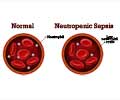
Estimating Sepsis Incidence Using Administrative Data and Clinical Medical Record Review
Go to source). The incidence turned out to be 750 adults per 100,000 individuals. In the latest study in the same region, the results showed that more than four percent of all hospitalizations involved the patient suffering from sepsis, and 20 percent of all sepsis patients died within three months.
‘Presumed notion that sepsis was rare has been shattered by a 2016 research study conducted in southern Sweden, unveiling its prevalence comparable to cancer and its life-threatening nature akin to a heart attack.
# Sepsis, #SepsisPrevalence
’
Tweet it Now
“This makes sepsis as common as cancer with similar negative long-term consequences, and as deadly as an acute myocardial infarction. Among sepsis survivors, three-quarters also experience long-term complications such as heart attacks, kidney problems, and cognitive difficulties”, says Adam Linder, sepsis researcher and associate professor at the Department of Infection Medicine at Lund University, as well as a senior physician at Skåne University Hospital.
The European Sepsis Alliance has assigned the researchers to assess how common sepsis is in the rest of Europe.
Bridging the Gap Between Commonality and Lethality
Given the differing healthcare systems across countries, it wasn't immediately clear how they should proceed to obtain accurate figures. Consequently, the researchers conducted a pilot study in southern Sweden to determine if their methods applied to other European hospitals.“Doctors classify patients using diagnostic codes. Since sepsis is a secondary diagnosis resulting from an infection, the condition is significantly underdiagnosed, as the primary disease often dictates the diagnostic code. This makes it challenging to find a way to accurately determine the number of sepsis cases”, says Lisa Mellhammar, a sepsis researcher at Lund University and assistant senior physician at Skåne University Hospital.
In the study, which is now published in JAMA Network Open, it was revealed that 7,500 patients in Skåne were associated with sepsis in 2019. During the pandemic, the incidence increased to six percent.
Advertisement
The aim is to use the publication to influence the EU to establish a common surveillance system for sepsis. The team is in contact with authorities and researchers from around thirty European countries and hopes that the research project can secure sufficient funding to start soon.
Advertisement
“Although sepsis care has improved in recent years, we need to enhance our diagnostic methods to identify patients earlier and develop alternative treatment methods beyond antibiotics to avoid resistance. Increasing awareness about sepsis among the public and decision-makers is crucial to ensure that resources are allocated appropriately", concludes Adam Linder.
Reference:
- Estimating Sepsis Incidence Using Administrative Data and Clinical Medical Record Review - (https://jamanetwork.com/journals/jamanetworkopen/fullarticle/2808870)
Source-Eurekalert










